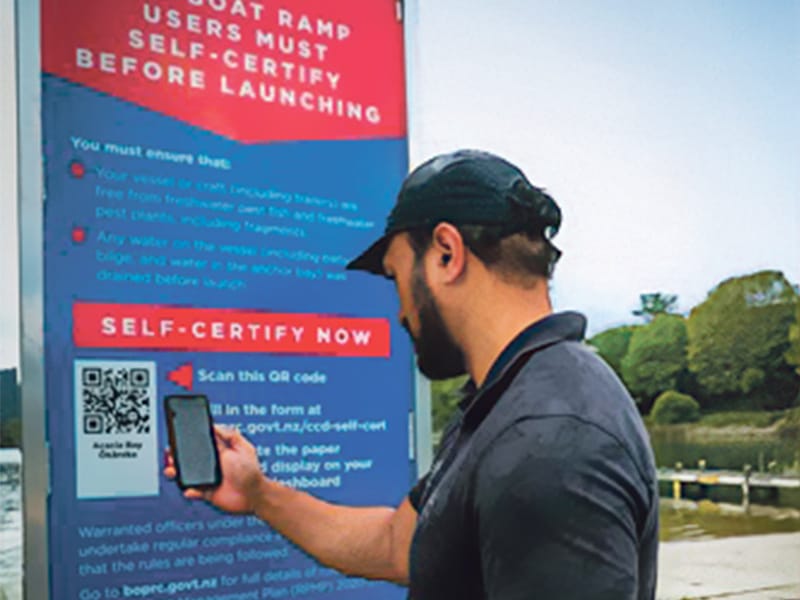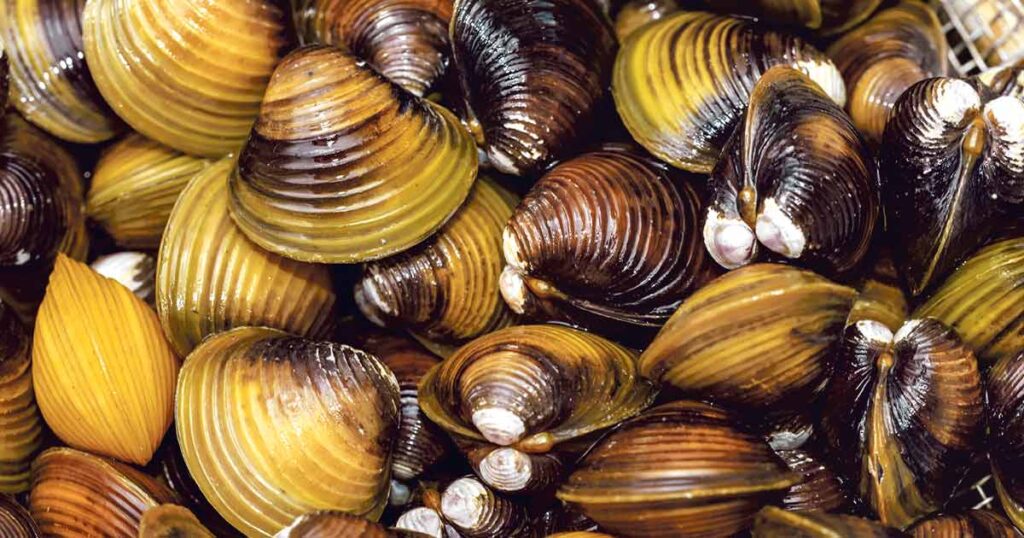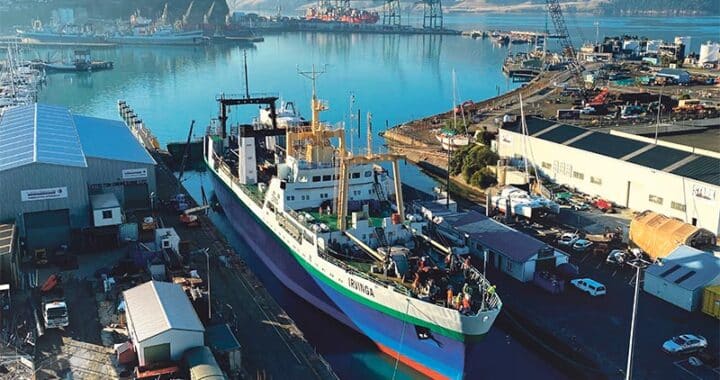Pest-free lakes: QR codes launched
3 min read
The QR code is available at 18 boat ramps in the region. Photo: Bay of Plenty Regional Council
In a move to safeguard the region’s lakes from invasive pests, the Bay of Plenty Regional Council has launched a QR code initiative. This new system enables lake users to complete an online self-certification form by scanning the QR code at 18 boat ramps in the region.
Te Wakaunua Te Kurapa, the biosecurity officer for aquatic pests at Bay of Plenty Regional Council, emphasised that self-certification is a mandated step outlined in the Bay of Plenty Regional Pest Management Plan (RPMP), which serves to prevent the introduction of new pests into the Rotorua Te Arawa lakes as well as between them.
Lake users also have the option to complete the form on the Bay of Plenty Regional Council website or fill out the paper form, which will be available at boat ramps.
Te Arawa Lakes Trust biosecurity officers will be out at boat ramps throughout the summer period to check for self-certification compliance.
The initiative follows reports of the spread of destructive gold clams, leading to the closure of Lake Ōkataina, a significant and popular trout fishing spot.
“The discovery of the invasive new-to-New-Zealand freshwater gold clam in the Waikato earlier in the year reinforces the need for lake users to be more vigilant than ever in stopping the spread of freshwater pests between waterways,” said Te Kurapa.
“We’re asking everyone to do their bit to protect the lakes and rivers that we all enjoy and love. Stop the spread of pests before they enter our waterways.”
Protecting rivers and lakes

In tandem with this, a new awareness campaign was launched ahead of Labour Weekend, urging all water users to play a part in preventing the spread of the clam from the Waikato River to any other lakes or rivers.
“The new public awareness campaign is a reminder to people of what they need to be doing, which is check, clean and dry boats and other gear before moving to other waterways,” said Biosecurity New Zealand director of readiness and response, John Walsh.
Freshwater gold clam is an unwanted organism under the Biosecurity Act, which makes following the new Check Clean Dry procedures a legal requirement in waters where it’s known to be – that’s a 99km stretch of the Waikato River from Lake Maraetai and downstream.
Walsh added that elsewhere, it is still good advice to Check Clean Dry before moving to another river or lake spot, to stop an unwanted hitchhiker catching a ride with you.
“It takes all of us to protect what we have got here in New Zealand, so we all have a part to play in making sure we do everything we can to stop this pest clam from getting into any other river or lake.”
To date, Biosecurity New Zealand has committed more than $2 million to manage this clam, said Walsh.
“Considerable investment has been made in surveillance to understand the extent of the clam incursion and in public awareness to contain the clam and prevent its spread outside of the Waikato River, which is the only area where it has been found.
“We’re funding surveillance, scientific advice, suppression trials, community liaison including iwi capability building, public awareness campaigns and cleaning stations.”



